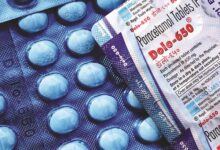In this piece I have tried to put together a number of findings pertaining to the effect that endothelial dysfunction by COVID-19 is the main cause of complications and even multi-organ damage.
One is by Nagele et al titled “Endothelial dysfunction in COVID-19: Current findings and therapeutic implications”Atherosclerosis (314) 2020 58-62.Preliminary studies indicate that patients with cardiovascular risk factors and/or established cardiovascular disease have the highest risk of being hospitalized with COVID-19 and developing a more severe disease course.
These risk factors include older age (>65 years)hypertension, obesity, diabetes mellitus, chronic lung disease, coronary artery disease and heart failure [1–4]. Interestingly, a common denominator of all these cardiometabolic diseases is endothelial dysfunction.
The endothelium is crucial for maintaining vascular tone and homeostasis – dysfunction is associated with vasoconstriction, inflammation, permeability, and coagulation. It is associated with major risk factors such as age, hypertension, diabetes mellitus, and obesity, as well as development and progression of cardiovascular diseases.Endothelial injury and dysfunction may be the result of direct infection by SARS-CoV-2 (e.g. by inducing intracellular oxidative stress as well as due to the profound systemic inflammatory response.
In light of the potential association of COVID-19 with endothelial injury, it seems plausible that patients with preexisting endothelial dysfunction are vulnerable to a more severe disease course given the crucial role of endothelial cells for vascular homeostasis and organ perfusion.
Vascular endothelial cells play a critical role in vascular homeostasis and the coagulation system. While healthy endothelial cells naturally express factors that induce vascular relaxation and increase blood flow, inhibit platelet aggregation and coagulation, and promote fibrinolysis, dysfunctional endothelial cells shift the balance towards vascular contraction and thrombus formation.
Most cardiovascular risk factors indeed cause a decreased endothelial production of vasorelaxing and antithrombotic mediators and a concomitantly increased formation of contracting and prothrombotic factors. In severe COVID-19, markers of both endothelial and platelet activation are increased compared to controls.
Extensive microthrombosis promoted and aggravated by endothelial dysfunction could explain the profound elevation of D-dimers and thrombocytopenia in severe COVID-19. In line with these haematologic findings, recent reports show increased risk of both venous and arterial thrombotic events in COVID-19.
Coronavirus Disease 2019 (COVID-19) is caused by a single strand RNA virus called severe acute respiratory syndrome coronavirus 2 (SARS-CoV-2).Though primarily known as a disease affecting the respiratory system, cardiovascular complications are common in COVID-19 .
These include myocarditis and myocardial injury that may lead to heart failure. Ischaemic stroke has been linked to COVID-19 progression because it had a higher incidence in patients with severe disease compared to those with milder symptoms.
There is also another titled “Endothelial dysfunction in COVID-19: a position paper of the ESC Working Group for Atherosclerosis and Vascular Biology, and the ESC Council of Basic Cardiovascular Science”. The vascular endothelium forms a critical interface between the circulatory system and underlying tissues and has vital and ubiquitous roles in cardiovascular homeostasis by regulating the transport of cells, nutrients and metabolites between the circulation and underlying tissues.
Several risk factors for cardiovascular disease including diabetes, obesity, dyslipidaemia, smoking and disturbed blood flow can induce EC dysfunction.
These include loss of integrity which is associated with increased permeability, induction of cytokines and adhesion molecules to capture inflammatory cells from the circulation, metabolic changes and a pro-thrombotic state. Emerging evidence indicates that EC dysfunction is a central feature of COVID-19.
This is evidenced by the critical role of vascular endothelium in inflammation, which is the key driver of cytokine dysregulation in ARDS as well as multiple cardiovascular pathologies. Additionally, the pro-thrombotic phenotype and disseminated intravascular coagulation observed in COVID19 reflect dysfunction of EC, which enhances thrombosis by reduced integrity leading to exposure of pro-thrombotic sub-endothelial material, capture of platelets and regulation of clotting cascades, thrombin activation and fibrin production. Franco et al, “Role of endothelial dysfunction in the thrombotic complications of COVID-19 patients”. Journal of Infection journal homepage: www.elsevier.com/locate/jinf.
In another review by Kunutsor SK. et al.1 on cardiovascular implications of coronavirus disease 2019 (COVID-19)-indeed, Sars-Cov-2 infection begins in lungs but moves rapidly to the vascular system with platelet alterations and blood clotting abnormalities, and associates with a high incidence of cardiovascular events and venous thromboembolism (VTE), especially in critically ill patients. Most therapies under active investigation for COVID-19 focus on inhibition of viral replication and suppression of the excessive immune response. However, in light of the above, treatment of endothelial dysfunction is a promising approach to protect vulnerable patients and to improve outcomes in COVID-19.
Many studies have demonstrated the possibility to enhance vascular function via lifestyle interventions and drug therapies. Two widely used drug classes, renin angiotensin system (RAS) inhibitors and statins, have been shown in a number of studies to consistently improve endothelial function in patients. Both drug classes exert pleiotropic effects on the endothelium and promote endothelium-induced stimulation of vascular relaxation as well as endothelium-mediated inhibition of thrombus formation. Beyond drug therapies, is the importance of effective preventive measures against the current pandemic.
Improving or maintaining a normal endothelial function by established lifestyle measures (i.e. keeping a normal weight, regular physical activity, abstaining from smoking and consuming a healthy and nutritious diet) may be helpful to reduce the risk of COVID-19. Specific supplemental interventions include intake of anti-oxidants.
Cocoa flavanols are able to inhibit platelet activation, adhesion, and aggregation, mechanisms that play a central role in the development of endothelial dysfunction. Moreover, cocoa and its main flavanols may improve vascular function among others by regulating the glucose and lipid profile, crucial risk factors for vascular damage. Consumption of flavanol-rich cocoa results in a parallel improvement in endothelial function.
DR. EDWARD O. AMPORFUL
CHIEF PHARMACIST
COCOA CLINIC



